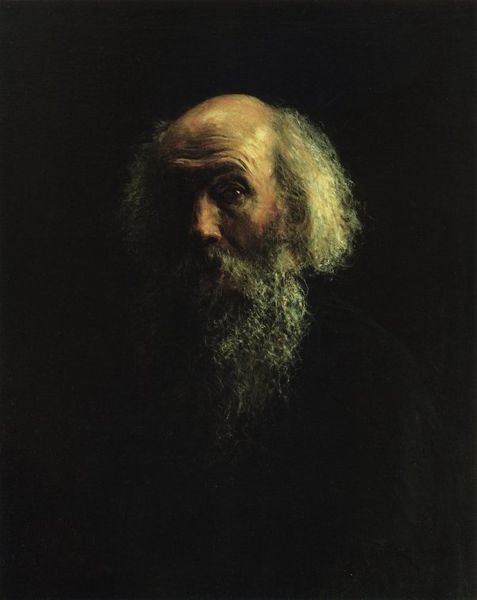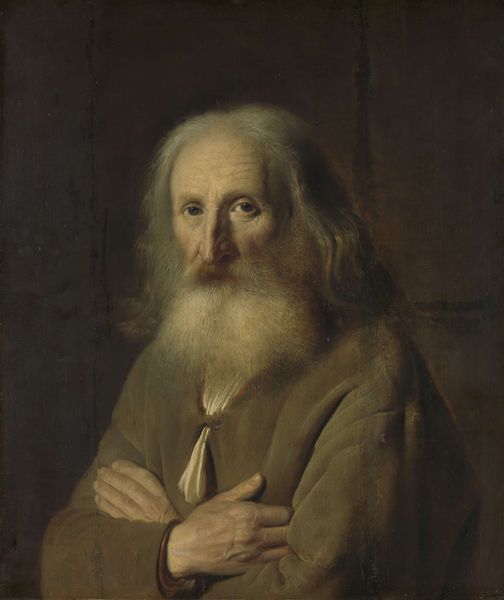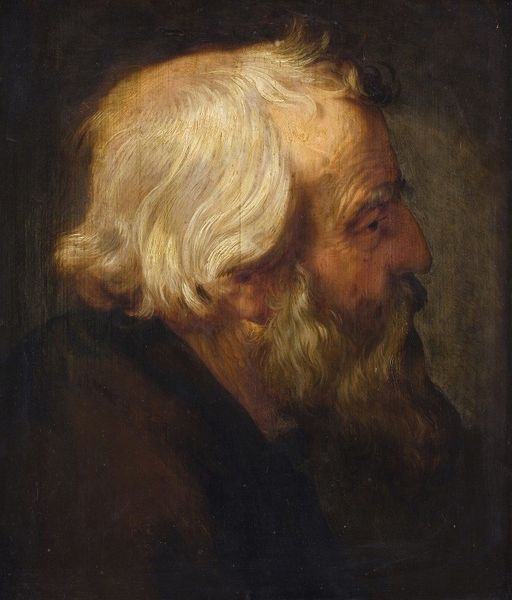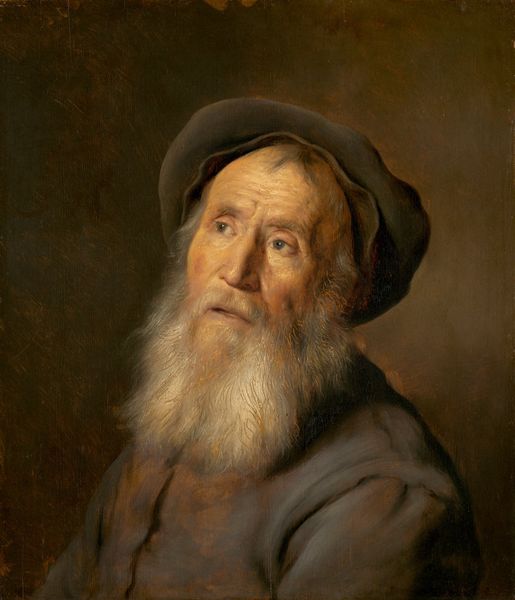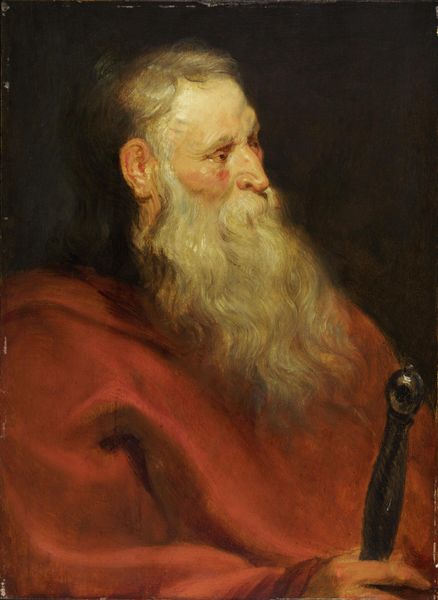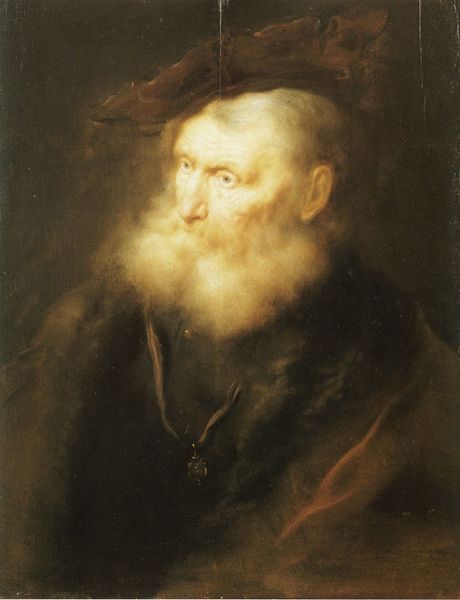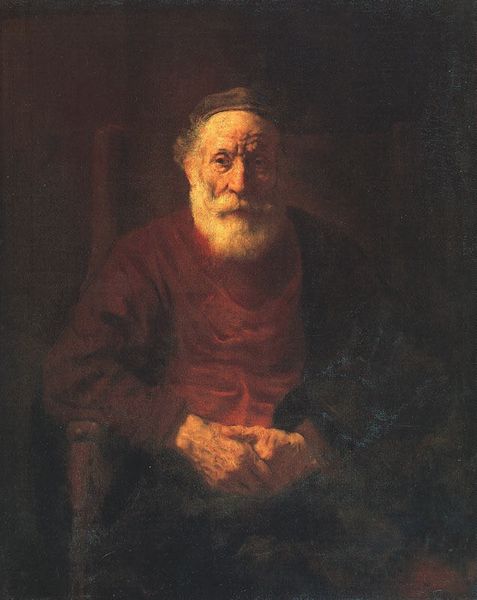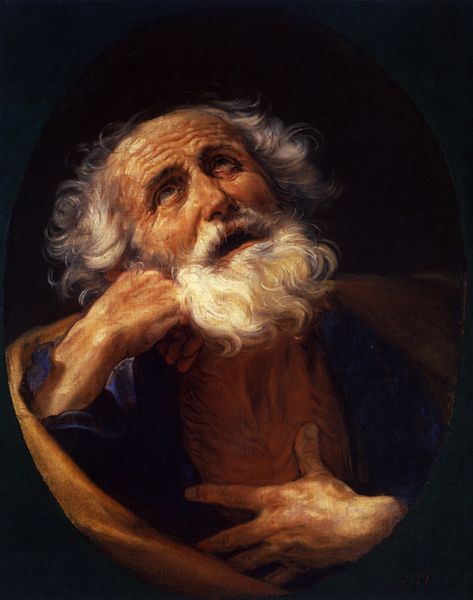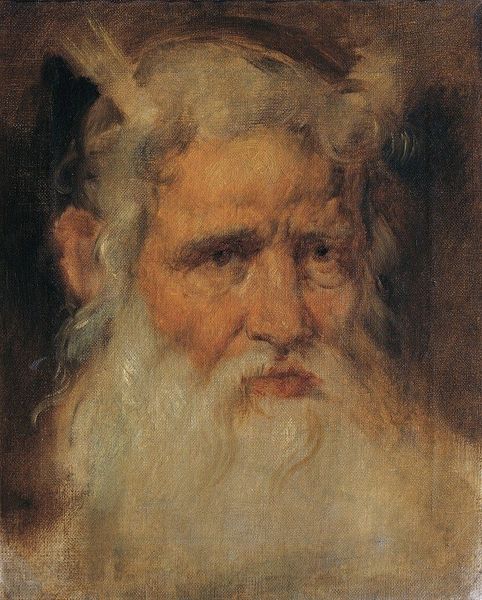
painting, oil-paint
#
portrait
#
baroque
#
dutch-golden-age
#
portrait
#
painting
#
oil-paint
#
figuration
#
history-painting
#
realism
Copyright: Public domain
Curator: Standing before us, we have Jan Lievens' "Head of an Old Man," an oil painting from around 1640, a compelling work from the Dutch Golden Age. Editor: The immediate impression is one of starkness, really. The face emerges from an oppressive darkness, with those luminous, almost spectral, areas around the hair and beard contrasting sharply against the somber backdrop. It’s quite powerful, compositionally. Curator: Absolutely. Lievens was known for his dramatic use of light and shadow—a technique, in part, influenced by his association with Rembrandt, which creates a distinct emotional atmosphere. Such portraits served diverse societal functions beyond simply likeness. Editor: The play of light isn't merely dramatic; it sculpts the form. See how the texture of the aged skin is revealed, with every line and wrinkle emphasized? It directs our attention so deliberately to those expressive eyes as well, conveying a real sense of melancholy, or perhaps world-weariness. Curator: Consider how in Dutch society at this time, images of older men might often symbolize wisdom, experience, or even piety, reflecting a cultural fascination with the visible marks of time. They weren't simply individuals; they were bearers of certain ideals, reinforced by institutions promoting societal stability. Editor: That's fascinating, and you can sense the symbolism resonating here. But technically, I’m struck by the artist's facility with rendering detail while maintaining this overarching unity of form. The loose brushwork in the beard, for instance, captures texture without being overly fussy. It reinforces the idea of a moment, a transient experience captured in pigment. Curator: Indeed. His ability to balance minute realism with an underlying symbolic framework allowed his portraits to navigate the complex socio-political and cultural landscapes of the Dutch Republic. It goes beyond pure formalism and tells us something deeper. Editor: Agreed. This dialogue between form and content enriches the experience for the viewer, both then and now, giving enduring weight to the image. Curator: Well, that certainly offers food for further contemplation, bringing a sharper clarity to the societal context of the artist and sitter alike. Editor: It brings out new light both literally and figuratively to this baroque composition of texture and tonality.
Comments
No comments
Be the first to comment and join the conversation on the ultimate creative platform.
